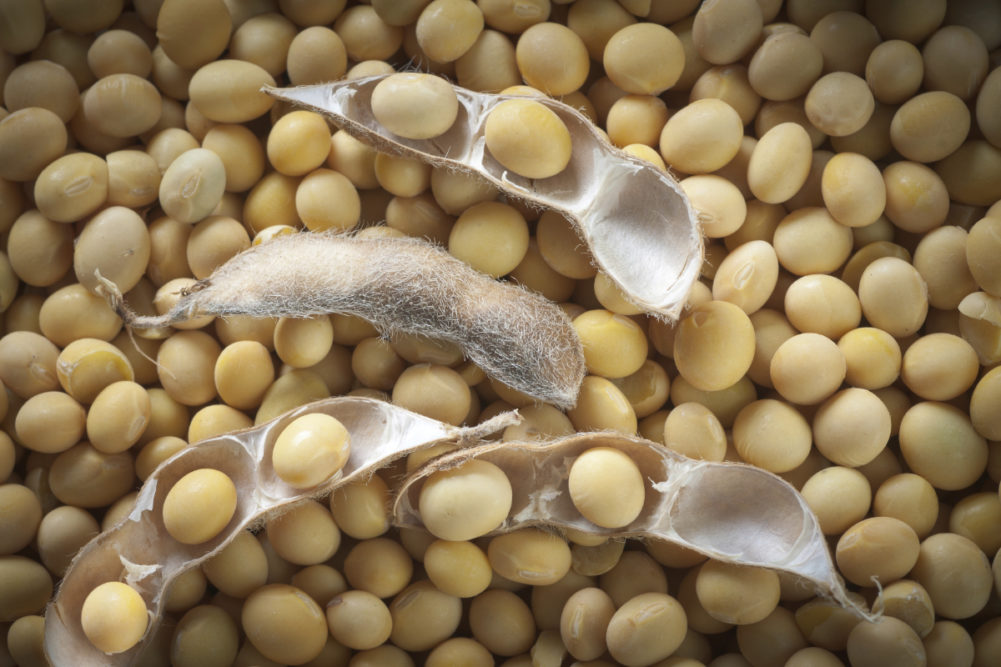LONDON, ENGLAND – Oilseeds prices firmed at the beginning of in August, but bearish new forecasts from the USDA helped turn prices lower as the month progressed.
The International Grains Council (IGC) in its Grain Market Report of Aug. 18 said its index for soybean prices was up by 4% month-on-month, “with gains registered at all origins,” and Chicago spot futures “moderately firmer.”
“The market was initially pulled higher by heightened worries about the impact of adverse weather on (US) Midwest yield potential, with tightening availabilities, shaped by a season of record local use and high exports, providing additional underpinning,” the IGC said. “More recently, futures were weighed by outlooks for improved Midwest conditions and signs of softer export interest. With basis levels moderately firmer, US Gulf export quotations were 2% higher, at $610 fob.”
Drawing support from gains in US futures, and with export premiums adjusting higher, “in part to reflect currency movements, quotations in Brazil (Paranagua) rose by 5%, to $609 fob,” the IGC said, but added that “the firmer market came despite pressure from a sluggish export pace, largely on generally muted demand from China.”
“Being thinly traded, Up River offers in Argentina were nominally firmer, at $594 fob,” the IGC said.
Turning to rapeseed, the IGC also explained that “ICE canola futures in Canada were little changed month-on-month, mildly underpinned by other markets for oilseeds and products.”
“In contrast, physical prices continued to retreat, fob values (Vancouver) declining by $28, to $681 fob, ahead of 2022-23 crop arrivals, which are set to recharge availabilities,” the IGC said. “In Australia, offers were modestly weaker, at $737 fob (Kwinana).”
The UN Food and Agriculture Organization (FAO), in its latest Food Price Index, published on Aug. 5, said its index for vegetable oil prices had fallen by 19.2% from a month earlier, to reach a 10-month low.
“The sharp drop was driven by falling world prices across palm, soy, rapeseed and sunflower oils,” the FAO said. “International palm oil prices declined for the fourth consecutive month in July, due primarily to prospects of ample export availabilities out of Indonesia, the world’s leading palm oil exporter.
“In the meantime, world soy and rapeseed oil quotations fell on, respectively, protracted sluggish demand and expectations of ample new crop supplies. In the case of sunflower oil, international prices dropped markedly amid subdued global import demand, despite continued logistics uncertainties in the Black Sea region.”
Will Ringrose, head of oilseeds at ADM Agriculture in the UK, said on Aug. 18 that “the US soybean market has come down with a bump over the past week with concerns about the wider economic slowdown and lower crude oil prices creating a more negative backdrop to the market.”
He explained that the previous week’s USDA World Agricultural Supply and Demand Estimates report “gave the market a bearish surprise, adding to the negative sentiment.”
“The USDA numbers predicted a bigger 2021-22 ending stock figure on the back of lower US exports, and they also raised the yield forecast for the upcoming US crop,” Ringrose said. “With crude oil prices drifting lower and the negative sentiment from the soy complex, the old crop rapeseed market is also coming under pressure with May 23 MATIF down circa €50 on the week.”
Recent rains, with some more in the five-day forecast, may improve the situation, he said.
“In the short term, the European and UK rapeseed market looks like it will struggle to get back to the highs unless we see a significant uplift in product demand,” he concluded.




